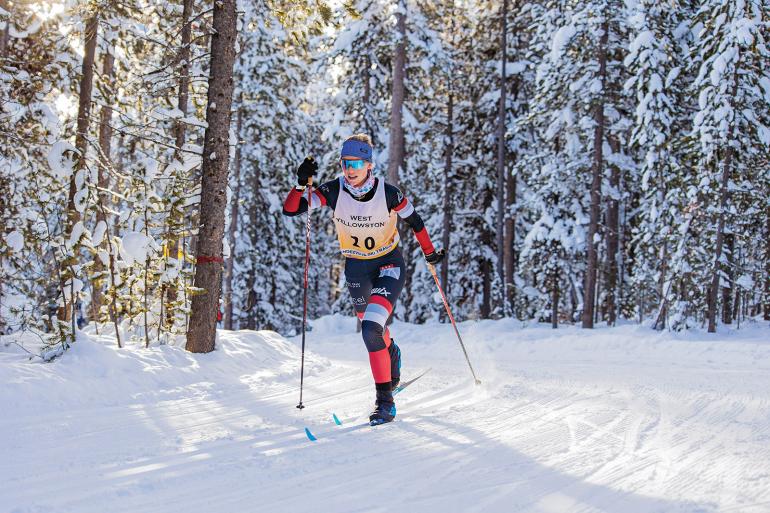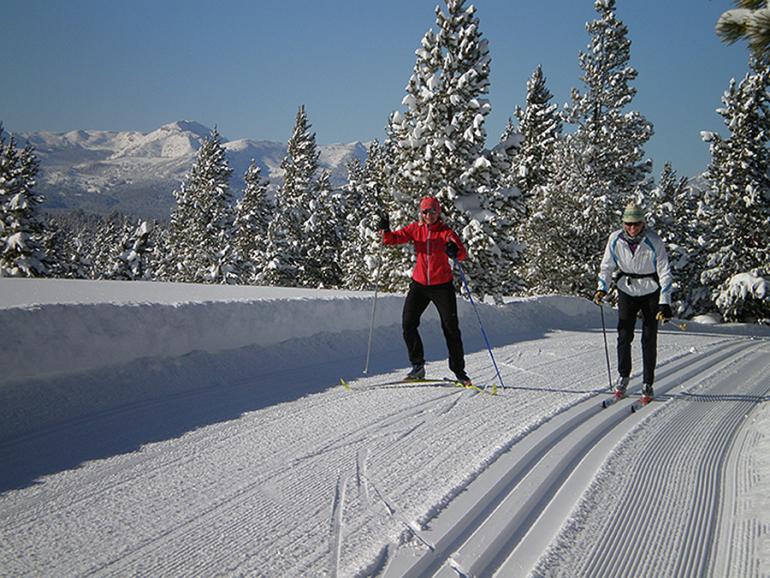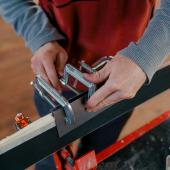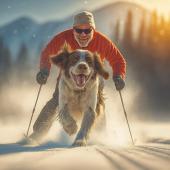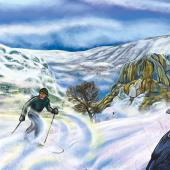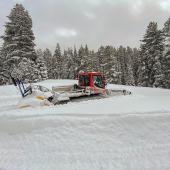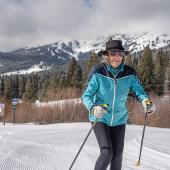Kickin' It
Pointers for XC skiers.
With beautifully groomed trails at Sunset Hills, Sourdough, and Crosscut, it’s no surprise that cross-country skiing has become one of Bozeman’s favorite pastimes. And I always appreciate seeing everyone from the Bozeman community—beginners and seasoned skiers alike—enjoying a little stride-and-glide. If you’re new to Nordic skiing, here are some suggestions to get you started on the right ski.
Equipment Matters
You don’t need to spend a whole paycheck on the latest and greatest gear, but understanding basic Nordic equipment will greatly increase your fun-factor. Skate skis have camber, which allows you to edge and push off the ski more effectively. Classic skis have wax pockets (or in some cases, scales or skins underfoot) and are designed to remain flat on the snow to provide forward kick. Trying to skate on classic gear, or vice-versa, will be fairly low on the fun scale.
The whole concept of Nordic skiing is to tackle what’s in front of you. Uphills, downhills, twists and turns—you name it.
When sizing your equipment, look for skate skis no longer than your height and poles that come to chin level. Classic skis can be longer—three to eight inches taller than you—while classic poles should come just up to the armpit.
Most trail systems in Bozeman can accommodate classic and skating, but particular snow conditions can be more enjoyable with a certain style. If it’s a powder day, or cold with chalky, squeaky snow, I reach for classic skis. If conditions are icy, hard-packed, or warming, skate skiing is a better option.
Baby Steps
Especially if you’re coming from an alpine background, cross-country skis can feel unstable and, well... edgeless. Start your XC ski day on a flat open area, and practice step-turning. First, with little to no speed, simply step circles to the left and right, then gradually build up speed. Try to be light on your feet. This will help engrain the technique of stepping corners instead of trying to edge your ski into the snow.
Hills Are Fun
The whole concept of Nordic skiing is to tackle what’s in front of you. Uphills, downhills, twists and turns—you name it. When skiing groomed trails, it will help to look 15-20 feet in front of you, rather than at your ski tips. This will help you anticipate the terrain, and adjust your body position and skiing line into corners. You want to be skiing the terrain, not reacting to it. As your comfort level increases, you’ll begin to learn different poling variations, which will let you change your skating gait and tempo.
Glide Smooth
This is what it’s all about. I don’t want to say “effortlessly floating over terrain,” because no matter how you cut it, XC skiing is a workout. But the more you can glide on one ski, the more fun you are going to have.
If you have ever seen someone nuking across a flat section of trail, they were probably using a more advanced technique. This requires poling and leg pushing at the same time as you transfer your weight to the other ski—enjoying some epic glide, then repeating the same poling-pushing motion back to the other leg. It requires full commitment and full weight transfer from one leg to the other, but don’t be intimidated.
Start with your skis together, pointing straight down the track, and use just your arms to pole. Push ten times with your poles, then begin to step your weight from one ski to the other. Start small, but get used to having all your weight on one foot at a time. Before you know it, you’ll be shredding so much corduroy it’ll feel like 1996. Sure, you might crash—but that’s fun, too.
Andrew Newell is a four-time Olympian and 16-year member of the U.S. Ski Team. Considered one of the best technical skiers in the world, he enjoys teaching technique to skiers of all ages. He coaches the Bridger Ski Foundation’s Nordic Pro Team and runs Nordic Team Solutions.

